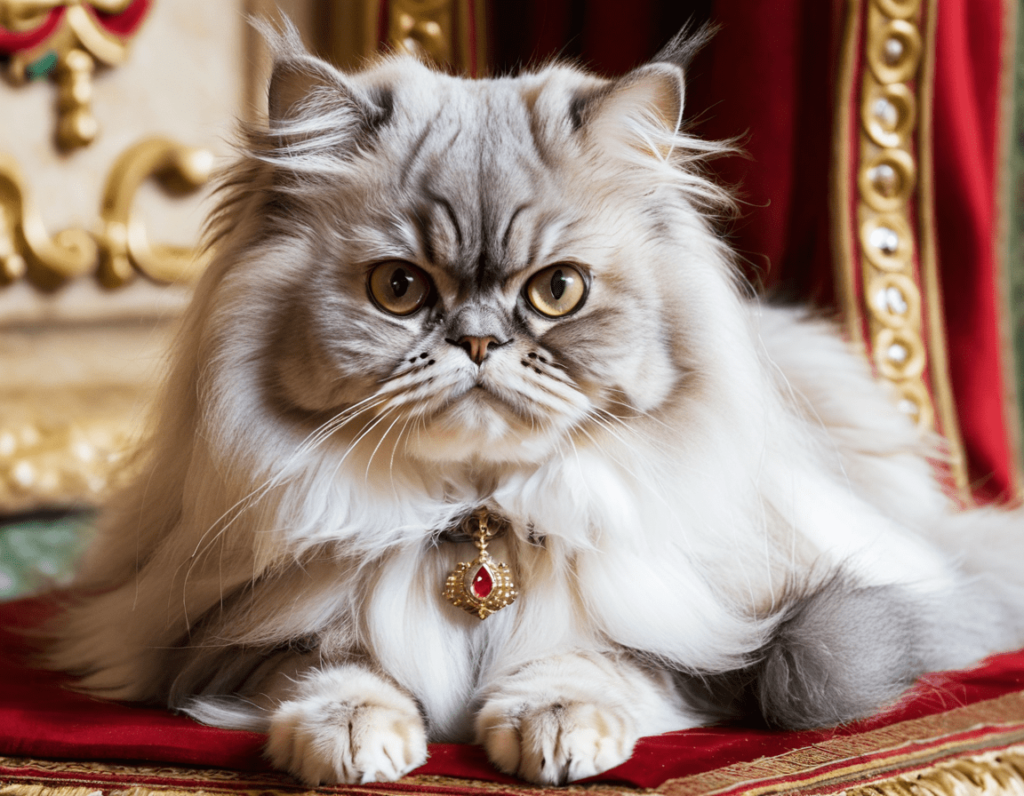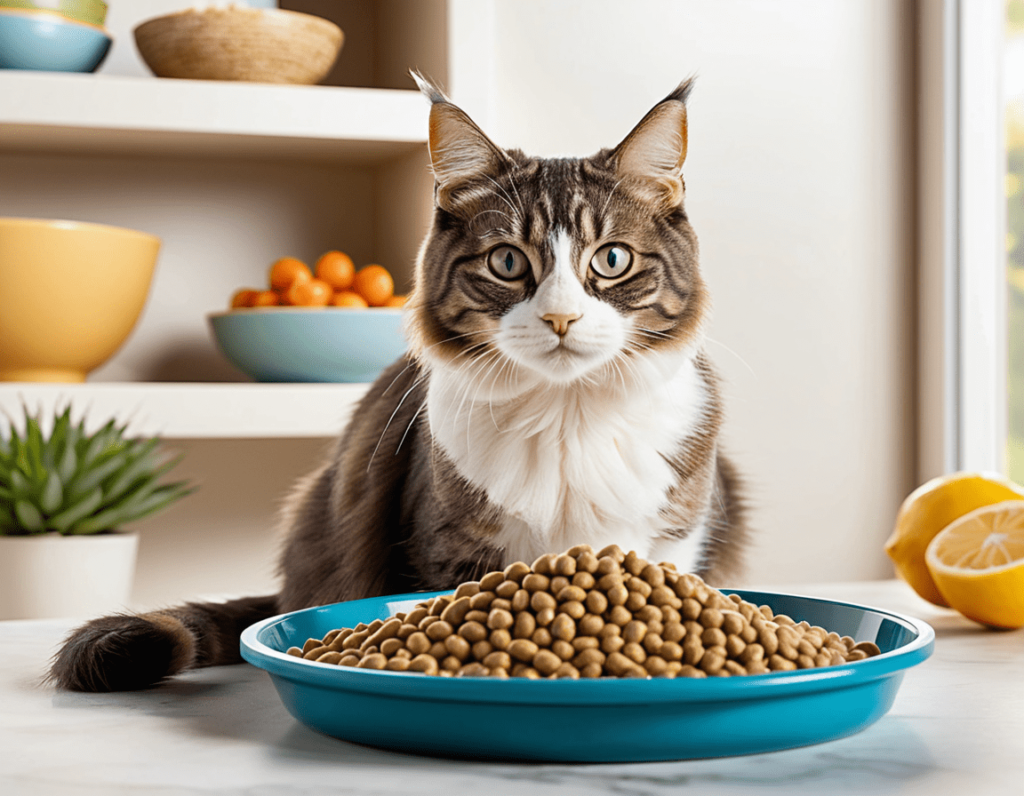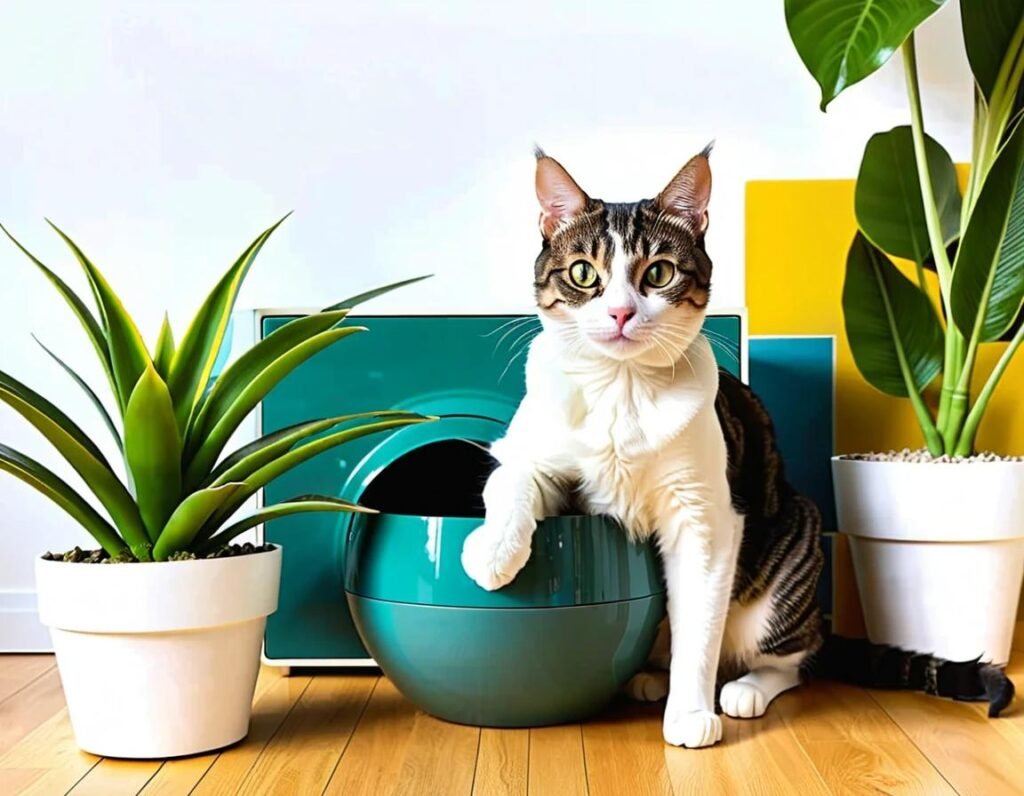
Safe & Stylish: Discover Cat-Friendly Plants!
If you’re a cat owner with a love for houseplants, you’ve probably faced a common dilemma: how do you fill your home with lush greenery without tempting your feline friend to nibble on dangerous leaves? While some plants are toxic to cats, the good news is that there are plenty of cat-friendly options that are not only safe for your furry friend but also add a touch of nature to your living space.
In this article, we’ll explore some of the best cat-friendly plants that you can safely bring into your home, along with a few tips on how to keep both your cats and your plants happy. Let’s dive in!
Why Choose Cat-Friendly Plants?
First things first, why should you care about choosing cat-friendly plants? Well, most houseplants aren’t too thrilled when your cat decides to use them as a snack bar. But the real concern is that many common houseplants are toxic to cats. They can cause anything from mild stomach upset to more severe health issues if ingested.
Choosing plants that are safe for cats means you can enjoy your love for plants without worrying about your furry friend. Plus, some cats love to nibble on leaves or dig in soil, so it’s best to make sure you’re not inadvertently creating a plant buffet with harmful ingredients.
1. Spider Plant (Chlorophytum comosum)
The Spider Plant is like the VIP guest at your plant party: easy to care for, safe for cats, and adored by many felines. This plant produces long, arching green leaves with white stripes, which look stunning hanging from a pot or placed on a shelf. But here’s the kicker: cats are often attracted to the dangling leaves and might try to nibble on them. While the plant is safe, it can be a bit of a cat magnet.
Pro Tip: If you want to keep your plant intact, place it out of reach—unless you’re okay with giving your cat a little green snack (they probably won’t eat too much!).
2. Cat Grass (Dactylis glomerata)
Yes, you read that right—cat grass! This is the plant made just for your cat. It’s safe, healthy, and often sold as pre-grown grass in pet stores. Cats love to munch on grass, which helps with digestion and provides a bit of natural entertainment. If you’re worried about your cat nibbling on your houseplants, give them a little bowl of cat grass to satisfy their cravings.
Fun Fact: Some cats go absolutely wild for cat grass, running to it as soon as it’s within sight. It’s like cat candy!
3. Boston Fern (Nephrolepis exaltata)
The Boston Fern is a beautiful, lush plant with soft, feathery fronds that can brighten up any room. It’s non-toxic to cats, making it a perfect addition to your indoor jungle. This fern loves humidity, so it thrives in bathrooms or kitchens, making it ideal for adding greenery to rooms with high moisture levels.
Tip: Boston Ferns like indirect sunlight, so avoid placing them in direct sunlight where their fronds might get burned.
4. Areca Palm (Dypsis lutescens)
Looking for a tropical vibe without the worry of toxic plants? The Areca Palm is an excellent choice. Its graceful, feathery fronds create an elegant, airy atmosphere, and it’s completely safe for your cats. Plus, it’s a low-maintenance plant that can tolerate a bit of neglect, which is great if you’re a busy cat parent.
Bonus: The Areca Palm helps purify the air, so it’s like a two-in-one: a beautiful decor piece and a natural air filter!
5. Bamboo Palm (Chamaedorea seifrizii)
Another palm option, the Bamboo Palm is not only cat-safe but also a fantastic air purifier. With its attractive, glossy leaves and ease of care, it makes a lovely addition to your home. It’s also known to thrive in low light conditions, which makes it perfect for those less sunny spots.
Pro Tip: Like other palms, the Bamboo Palm does best in well-drained soil, so don’t drown it in water—keep it happy with just enough hydration!
6. Are Succulents Safe for Cats?
While many succulents like aloe vera or jade plants are toxic to cats, there are some non-toxic options you can enjoy. The Hens and Chicks (Sempervivum) is a succulent variety that’s safe for cats. With its unique rosette shape, it adds an interesting texture to your plant collection.
Caution: Even with safe succulents, cats love to play in soil. If your cat is prone to digging, you might want to keep these plants out of reach.
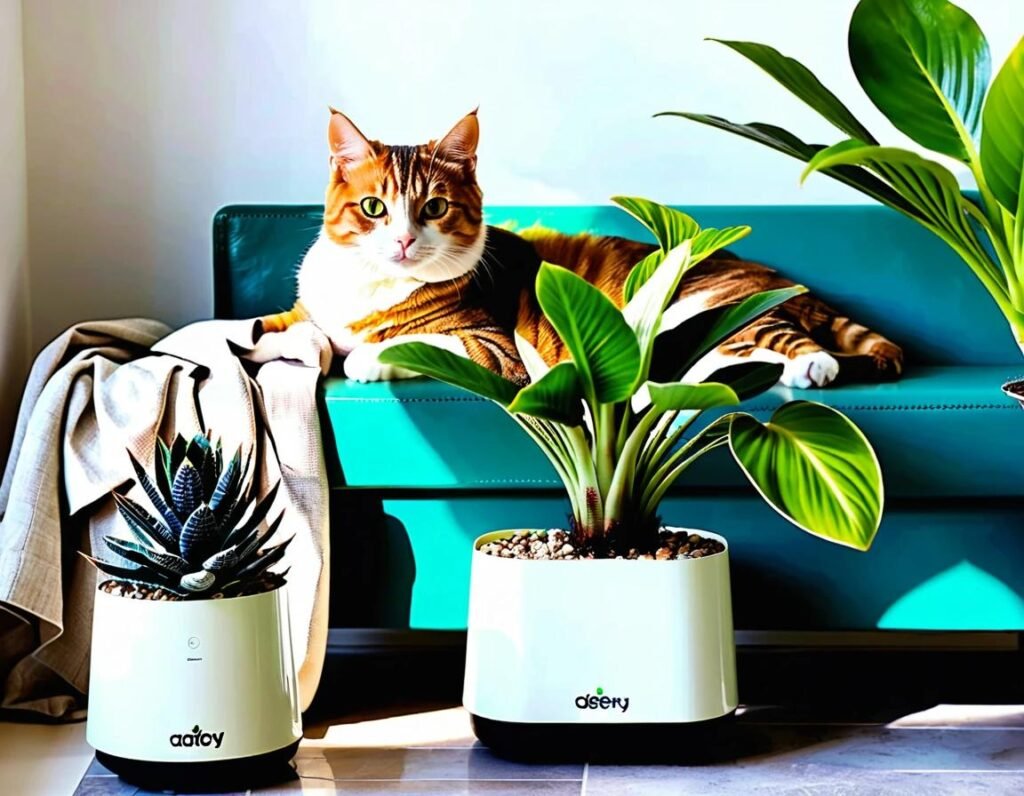
7. Prayer Plant (Maranta leuconeura)
The Prayer Plant gets its name because its leaves fold up at night, like hands in prayer. Not only is this plant safe for your cat, but it’s also a fun one to watch. With colorful, patterned leaves, the Prayer Plant adds a splash of visual interest to any room. It’s perfect for placing in spots with moderate lighting.
Pro Tip: Keep the soil moist, but don’t overwater. The Prayer Plant likes humidity, so it’ll thrive in a bathroom or kitchen with a bit of extra moisture in the air.
8. African Violet (Saintpaulia)
If you love flowers, the African Violet is a wonderful choice for a cat-friendly flowering plant. These little beauties come in a range of colors, from purple to white, and they’re completely safe for your feline friends. They also bloom all year round, so you’ll have a constant display of color in your home.
Bonus Tip: African Violets need indirect light and can be a bit picky about their watering schedule—just like your cat might be about their favorite nap spot!
9. Zebra Plant (Aphelandra squarrosa)
The Zebra Plant, with its striking white and green striped leaves, is an eye-catching addition to any cat-friendly plant collection. It’s non-toxic to cats and will thrive in bright, indirect sunlight. However, the Zebra Plant can be a little high-maintenance— it likes a bit of extra attention when it comes to water and humidity levels. But with the right care, you’ll have a beautiful and safe plant for your feline companions to enjoy (without nibbling, hopefully!).
Fun Fact: If your cat does decide to bat at the Zebra Plant’s striking leaves, don’t worry—it’s more likely to be a plaything than a meal!
10. Calathea (Calathea spp.)
The Calathea, also known as the “prayer plant,” is another safe, stunning option for your home. It’s famous for its unique leaf patterns, which fold up at night as though in prayer. It’s also totally safe for your cat to interact with, whether they’re just lounging beside it or curiously sniffing the leaves.
Pro Tip: Calatheas are a little finicky when it comes to their environment. They prefer warm, humid places, so it’s best to keep them in bathrooms or kitchens where humidity is naturally higher. Don’t forget to mist their leaves occasionally to keep them happy!
11. Pilea (Pilea peperomioides)
Known as the “Chinese Money Plant,” the Pilea is a cute, easy-to-care-for option that’s perfect for your cat-friendly home. It has round, shiny leaves that are irresistible to pet owners and cats alike. The best part? It’s totally safe for cats, so you don’t need to worry if your feline friend decides to investigate this leafy beauty.
Fun Fact: Pileas can be great conversation starters, with their quirky, coin-shaped leaves. Just be sure to place them in a well-lit spot where they can thrive.
Tips for Keeping Your Cat and Plants Safe Together
Now that you know which plants are safe for your cat, here are a few extra tips to keep both your greenery and your feline friend happy:
- Place Plants Out of Reach: While many of these plants are safe for cats, some cats love to dig or chew on anything within paw’s reach. Try placing plants on shelves, windowsills, or hanging baskets to keep them safe from curious paws.
- Provide Cat Grass: If your cat loves to nibble on plants, provide them with a pot of cat grass. It’s a great way to satisfy their cravings and save your other plants from being chewed on.
- Know What’s Toxic: There are many plants that are toxic to cats, including lilies, poinsettias, and some types of ivy. Make sure to double-check any new plants before bringing them into your home.
- Ensure Proper Plant Care: Healthy plants are less likely to attract pests, and they also thrive in the right environment. Each plant has its specific needs, so pay attention to things like light, watering, and humidity to keep your plants (and your cats) content.
Final Thoughts: The Purrfect Combination of Cats and Plants
It’s clear that with a little bit of effort, you can create a safe and beautiful environment filled with cat-friendly plants. Whether you’re growing a mini jungle for your furry friend or just looking to add a bit of green to your space, there are plenty of safe options that will brighten your home while keeping your cats safe.
So, next time you’re shopping for plants, remember: with a little planning, you can make your home a paradise for both you and your cat. And who knows? Maybe your cat will even become a little plant connoisseur, nibbling on their own cat grass and leaving your other plants to thrive.
Enjoy your new green space—and may your cats’ curiosity be satisfied with the safe, cat-friendly plants you’ve chosen. 🌿😸
Conclusion: Keep Your Cats and Plants Perfectly Happy
There you have it—plenty of cat-friendly plants that will add beauty to your home without posing a risk to your curious feline friend. Whether you’re a newbie plant parent or a seasoned plant pro, it’s important to ensure that the plants you choose are safe for your cats to avoid any accidental munching mishaps.
And remember, some cats simply can’t resist the temptation to nibble on plants. If that’s the case, just provide them with a safe alternative like cat grass or some catnip—because even cats deserve a little greenery in their lives, right?
Now go ahead and add some plants to your cat-friendly home, and let your feline family enjoy the jungle vibes without the worries. After all, the only thing better than a house full of plants is one full of happy cats too!
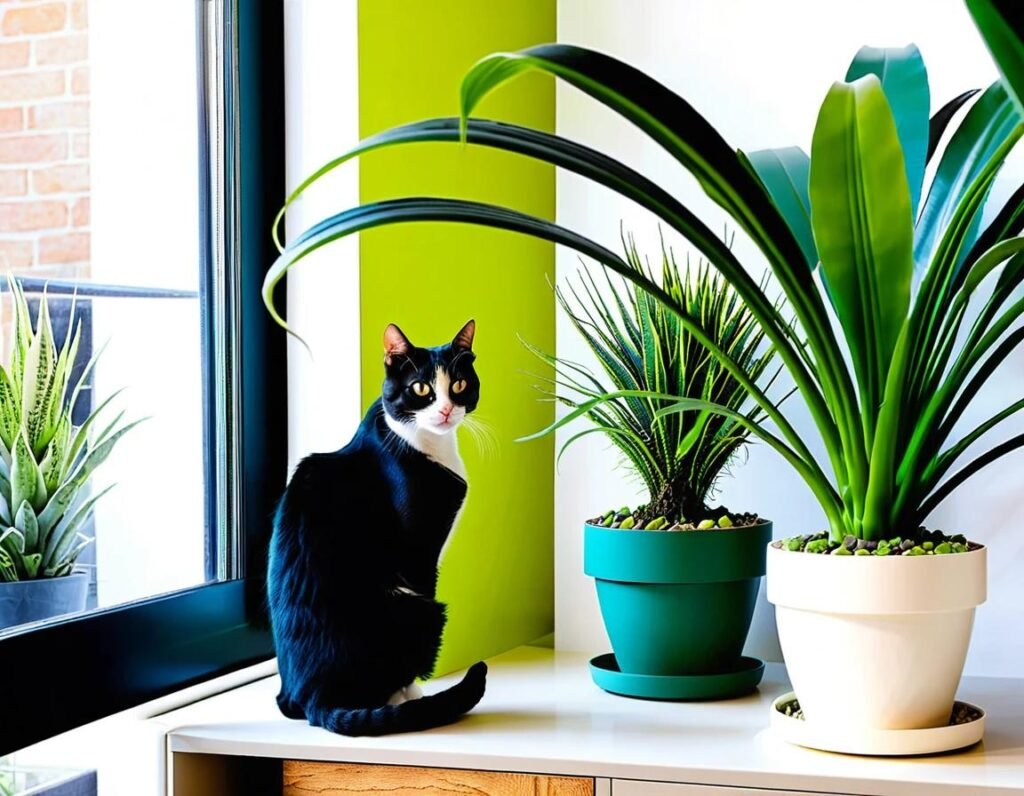
FAQs About Cat-Friendly Plants
1. Are all plants safe for cats?
Answer: Unfortunately, not all plants are safe for cats. Many common houseplants can be toxic to felines. Some plants, like lilies, poinsettias, and ivy, can cause serious health issues if ingested by cats. It’s important to research any plant before bringing it into your home, especially if your cat has a tendency to chew on things.
2. What are the best cat-friendly plants?
Answer: Some great cat-friendly options include:
- Spider Plants
- Boston Ferns
- Bamboo Palm
- Areca Palm
- Cat Grass
- Calathea
- Pilea (Chinese Money Plant)
These plants are non-toxic and safe for your curious kitty to interact with.
3. Can cats eat plants?
Answer: While some cats enjoy nibbling on plants, it’s important to remember that not all plants are safe for them to eat. It’s best to provide your cat with their own special “cat grass,” which is safe for them to chew on and can help with digestion. Avoid allowing them to eat toxic plants that could cause harm.
4. How can I prevent my cat from eating plants?
Answer: If you have a cat who loves to nibble on plants, try placing your plants in areas that are out of reach, like on high shelves or in hanging baskets. Alternatively, you can use plant deterrents or provide them with their own cat grass to satisfy their cravings. You could also try sprinkling some citrus peels or cayenne pepper near your plants—cats often dislike these smells.
5. How can I tell if a plant is toxic to cats?
Answer: A quick search online or checking the ASPCA’s website will help you determine if a plant is toxic to cats. If you suspect your cat has ingested a toxic plant, contact your vet immediately. Symptoms of poisoning can include vomiting, lethargy, drooling, or diarrhea.
6. What if my cat knocks over a plant?
Answer: Cats are known for their playful nature, so it’s not uncommon for them to knock over plants. To avoid the mess, try using heavier pots or placing your plants in areas that are harder for your cat to reach. If the plant gets knocked over, clean it up quickly and check your cat to make sure they haven’t eaten any of the plant material.
7. How can I keep my plants healthy with a cat in the house?
Answer: Place your plants in spots with adequate sunlight and ensure they have proper drainage. Since cats might dig or bat at them, try using tall or hanging planters to keep the plants out of their reach. Also, consider non-toxic sprays that help keep cats away from your plants without harming them.
8. Can cats get sick from eating houseplants?
Answer: Yes, many houseplants are toxic to cats, and eating them can lead to serious health issues, from gastrointestinal problems to kidney failure, depending on the plant. Always make sure to double-check if your plants are safe before bringing them into your home.
9. Can cat-friendly plants improve my cat's health?
Answer: Yes, cat grass (often wheatgrass) can help with digestion and reduce hairballs, as cats like to chew on the grass to help them expel hair from their stomachs. Providing safe plants like this can benefit your cat’s health by giving them a natural way to aid their digestion.
10. Where can I buy cat-friendly plants?
Answer: You can find cat-friendly plants at local garden centers, pet stores, or online retailers that specialize in pet-safe plants. Be sure to check the plant’s care requirements to ensure they’re suitable for your home environment.
By choosing the right plants for your home and taking a few precautions, you can create a safe and enjoyable space for both you and your cat! Happy plant shopping! 🌱🐾

